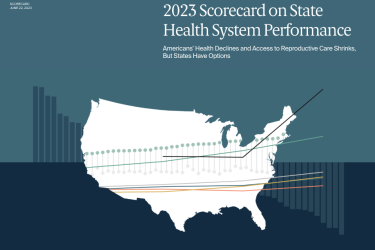By Victoria Clayton, California Health Fellowship
The 988 crisis line is monumental in that it’s the biggest federal health effort since Obamacare, investigative journalist Eli Cahan said during a lightning talk at Health Journalism 2024. And, like the Affordable Care Act, 988 is doing good work yet it’s far from optimized, he noted.
During the session, titled, “988’s bumpy rollout: Obamacare all over again?”, Cahan discussed his reporting detailing problems call center workers and users have experienced since the federally mandated crisis number became available in July 2022. The three-digit number, available to all landlines and cell phone users, allows access to a network of more than 200 local and state-funded crisis centers.
Cahan detailed the struggle of a 988 call center worker in Toledo, Ohio, who reported feeling pressure to restrict services for some callers when her supervisors warned that chronic users of the crisis service “clog up the line.”
He also recounted the story of a woman in Florida who found it nearly impossible to receive appropriate services when her loved one was in crisis. 988 currently uses caller area codes to route calls to the closest appropriate center. But, because cell phone area codes aren’t always accurate indicators of where a caller is located, confusion can result.
“The call centers don’t seem to have the tech to easily forward calls to other centers,” Cahan said. There is a current debate about whether 988 should use geolocating to improve service, using technology such as WiFi or GPS to determine the exact location of a device, even though there are associated privacy implications, he noted.
In addition, Cahan discussed Vibrant Emotional Health, the organization appointed by the federal government to oversee the complicated network of crisis lines. He urged reporters to hold Vibrant, as well as the state and local nonprofits receiving monies from Vibrant, accountable. His reporting indicates the training for call center workers is patchwork at best — with widely varying degrees of professionalism and different approaches to intervention.
Cahan, who is also a pediatrician at Boston Children’s Hospital, said he hoped reporters would focus more on mental health issues, but his take-home message extended beyond 988 or even mental health reporting: He urged reporters working on any health policy issue to humanize the topic by telling individual stories. He also suggested that reporters can begin to wrap their heads around complicated policy stories by focusing first on these three questions:
- Who does the work?
- How is the work done (including processes and technology)?
- How is it funded?
Victoria Clayton is an independent journalist based in Westlake Village, Calif. She was a 2024 AHCJ-California Health Journalism Fellow.








